
Biblioteca Laurenciana / Laurentian Library
- 1523 - 1571
- BUONARROTI, Miguel Angel
- Florencia
- Italia

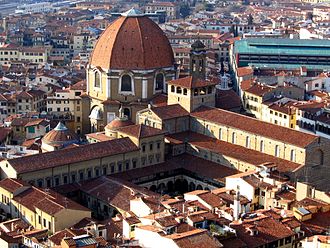
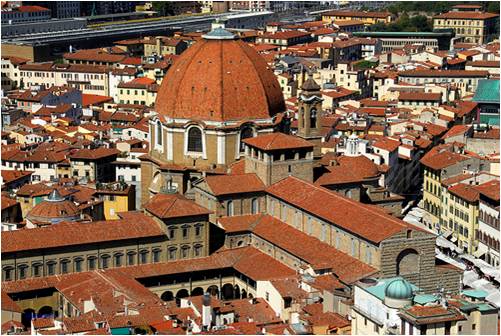

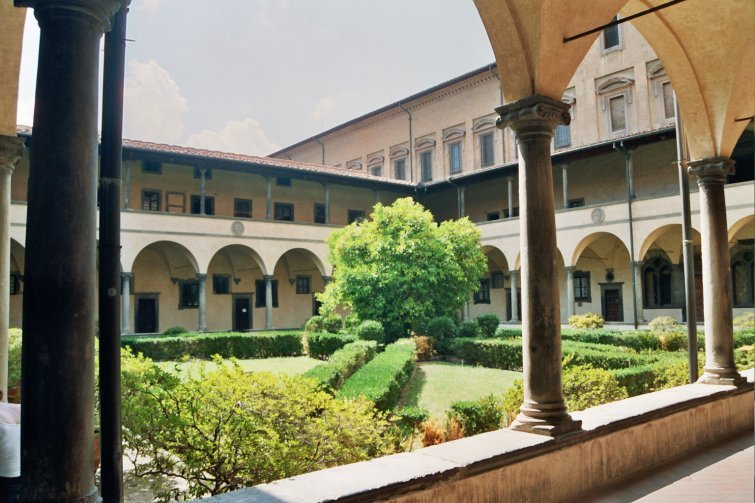
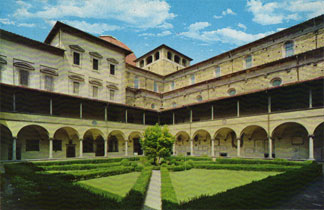
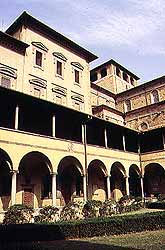
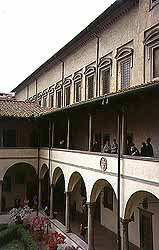
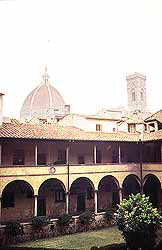
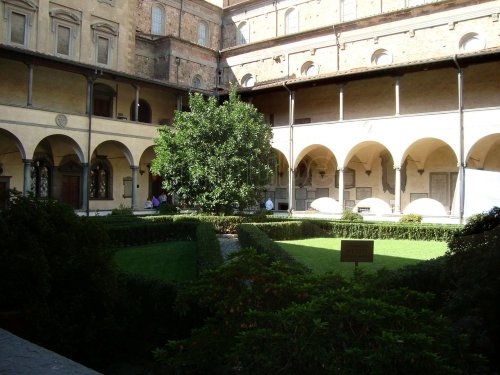

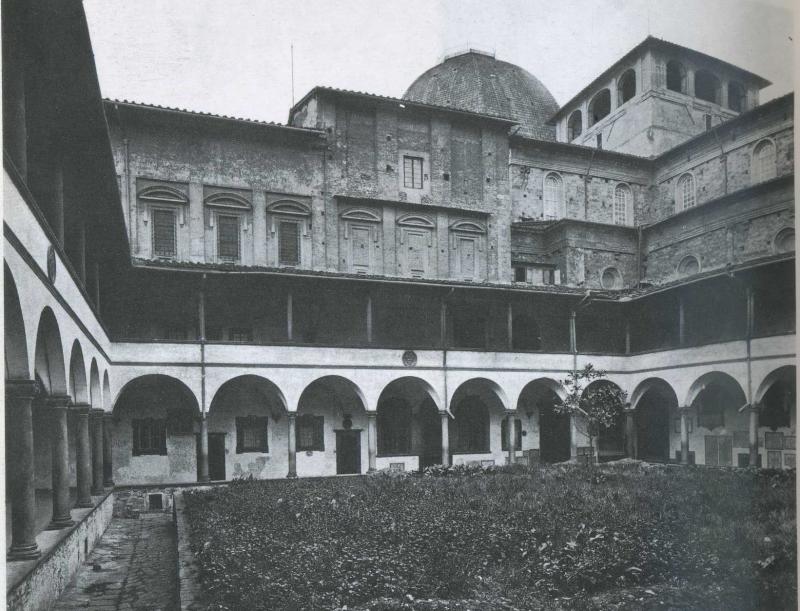




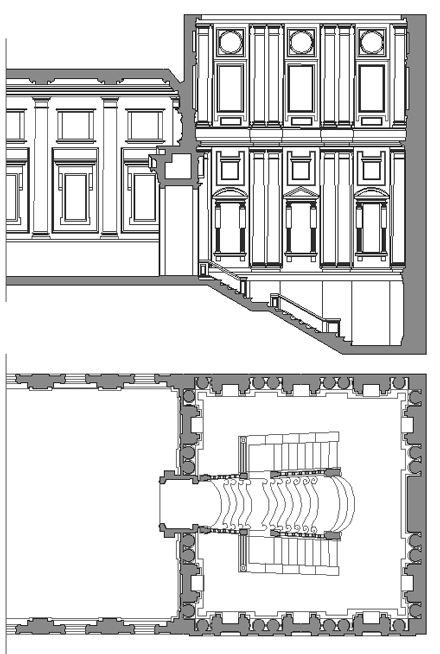
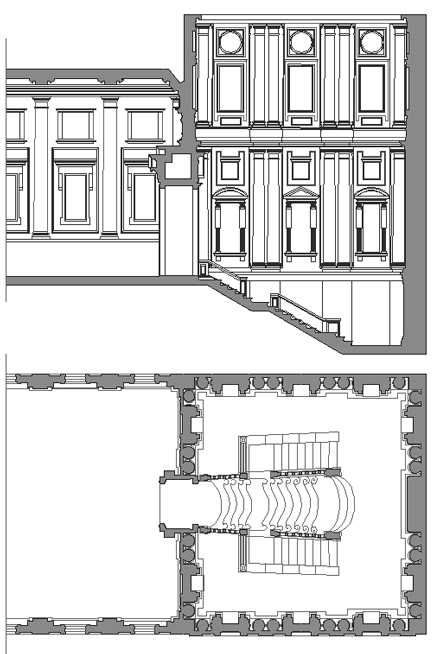
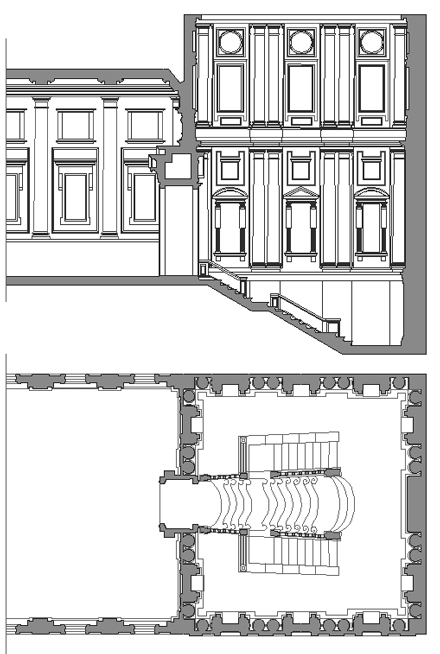



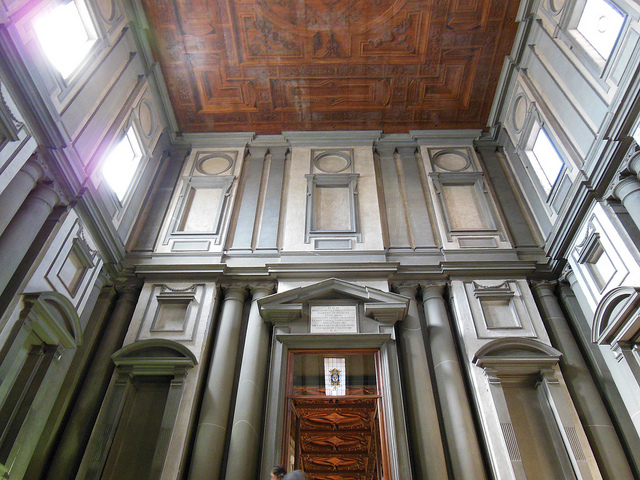
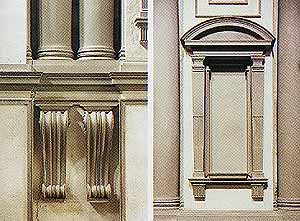
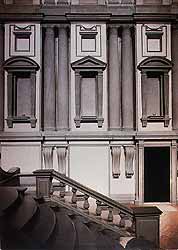
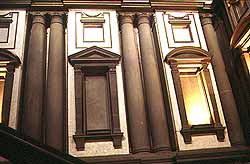

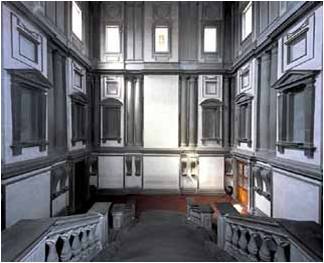
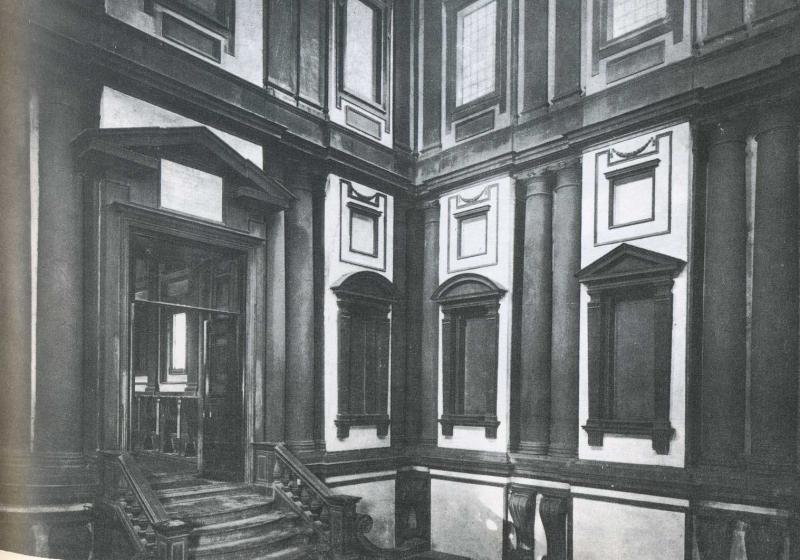

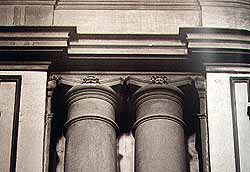
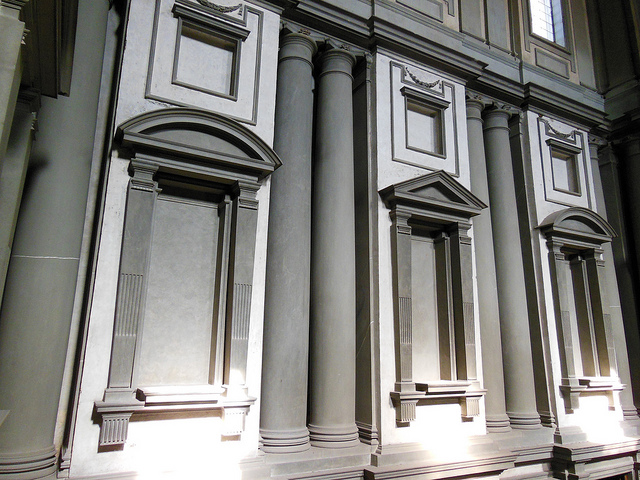
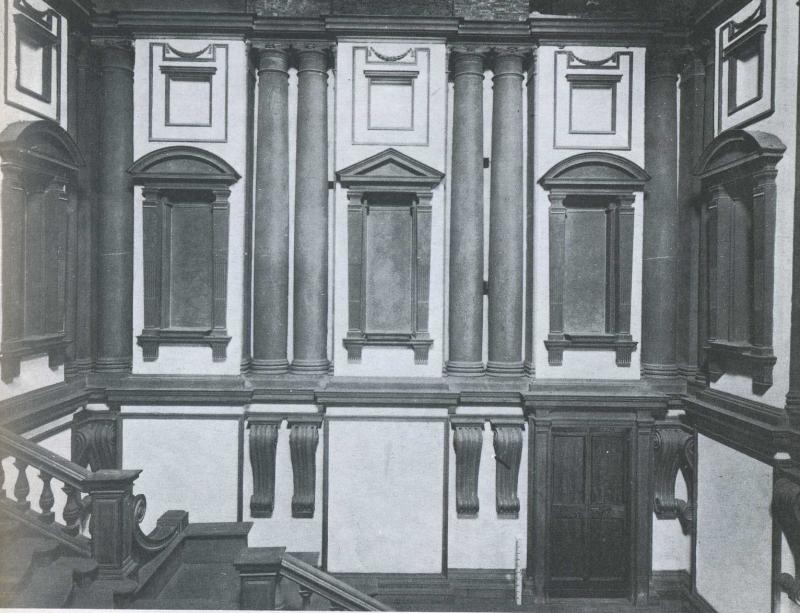
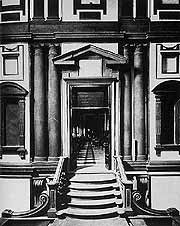
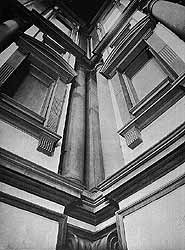
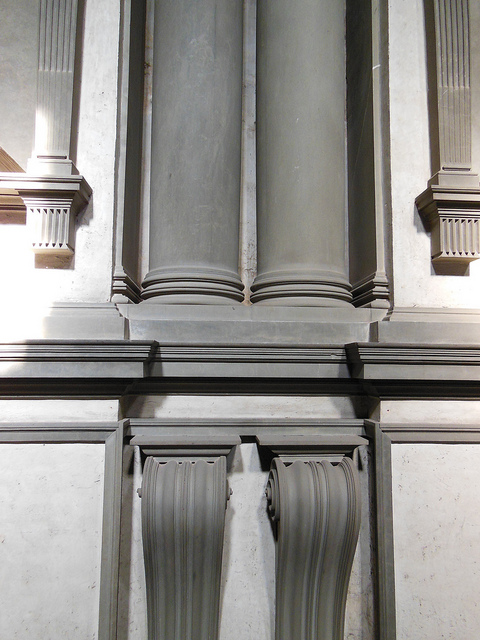
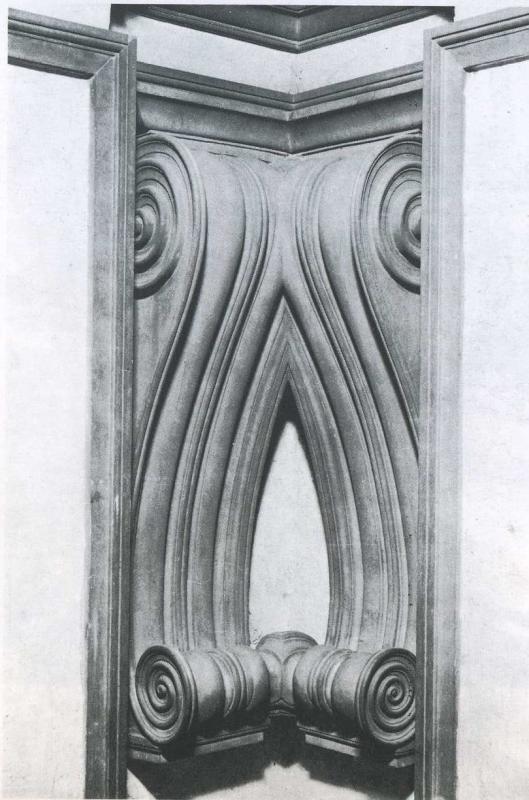
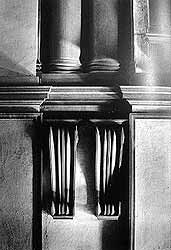
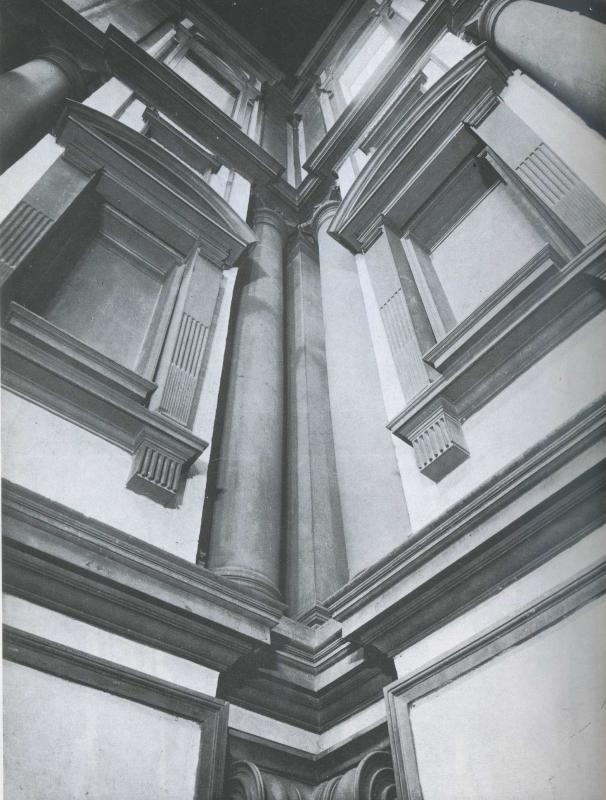
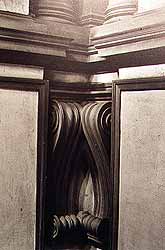
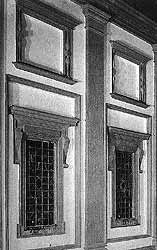
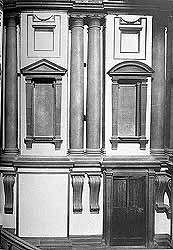

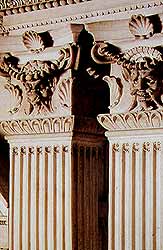
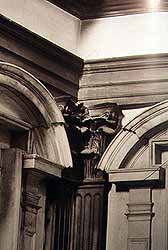
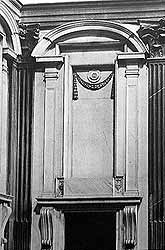

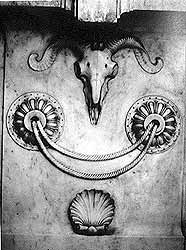

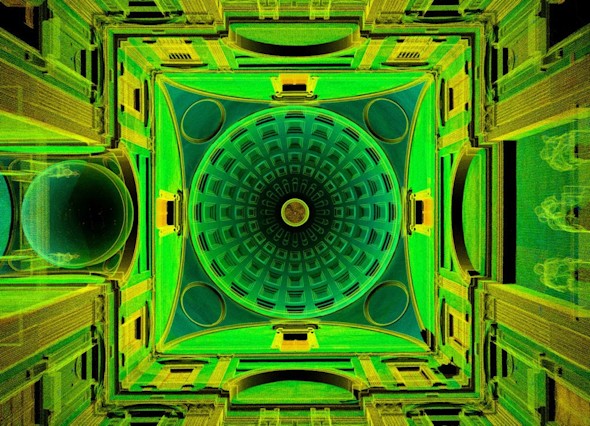
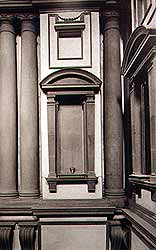

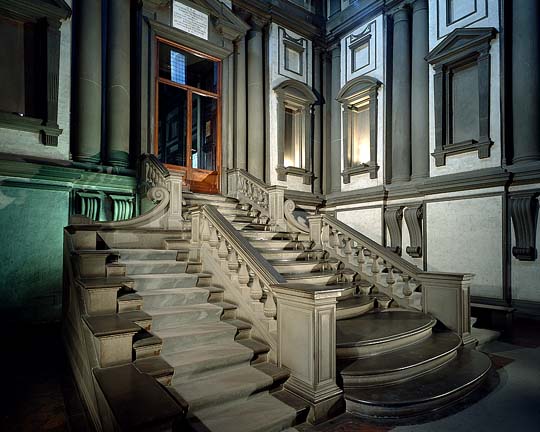
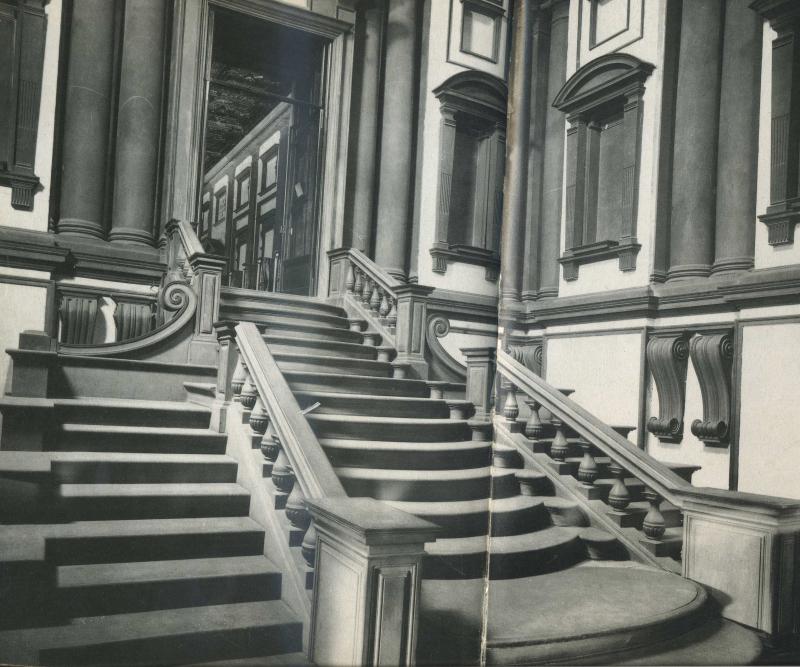
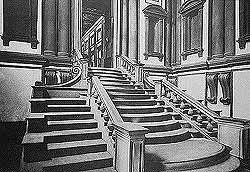
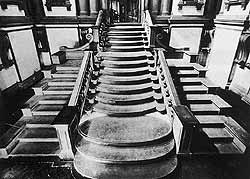

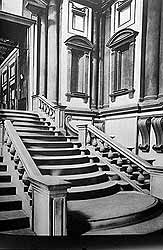

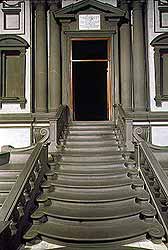


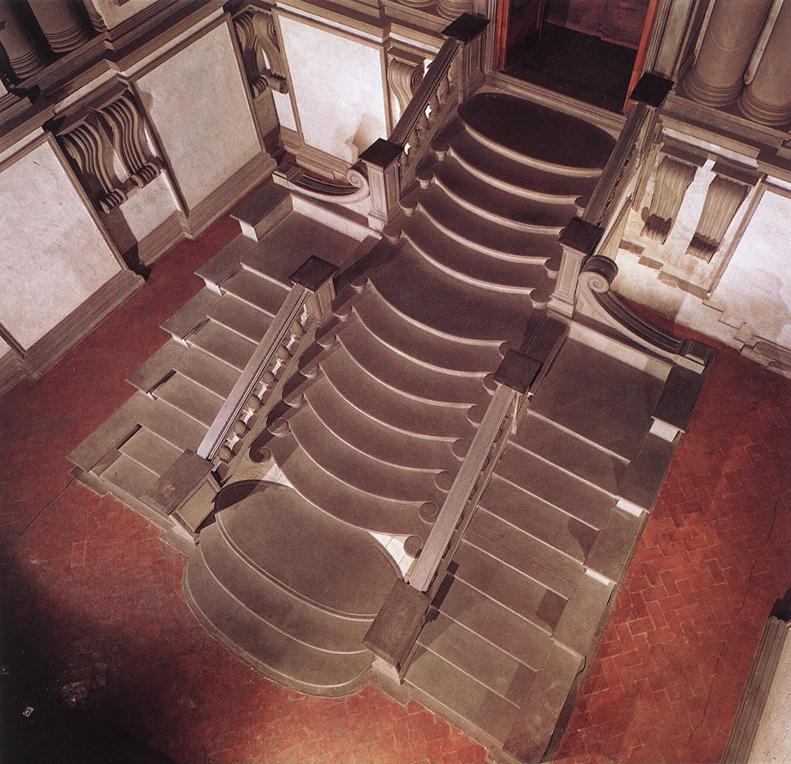

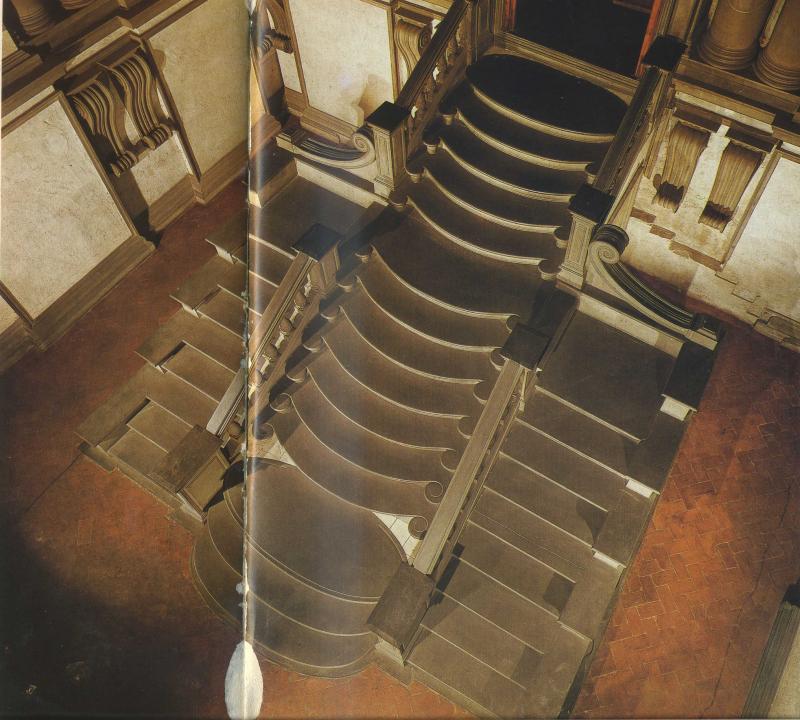
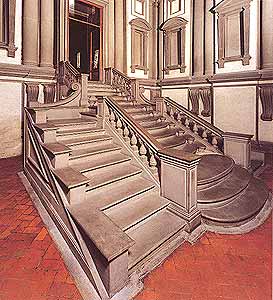
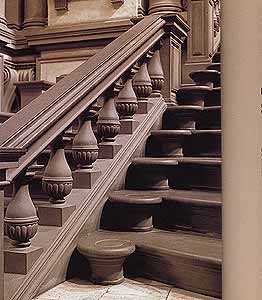
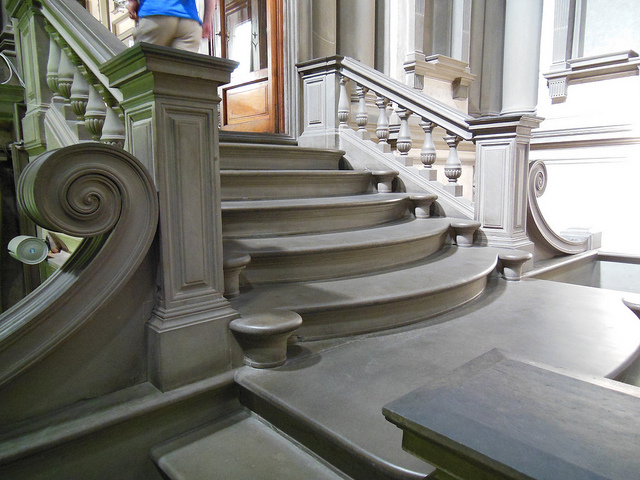
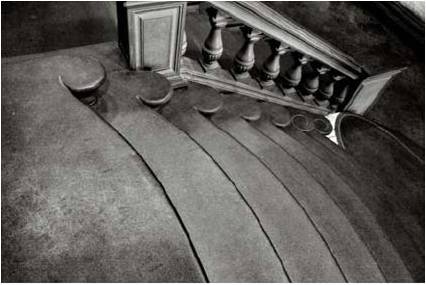
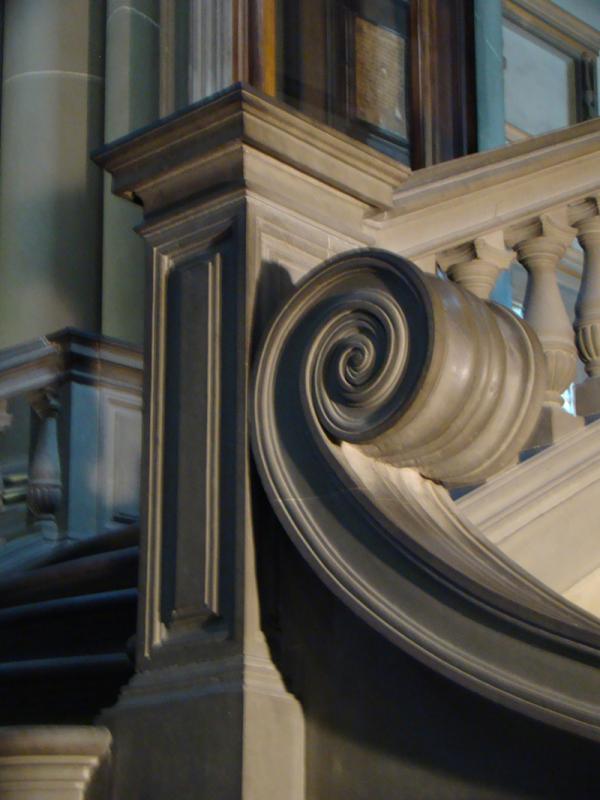
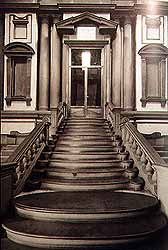
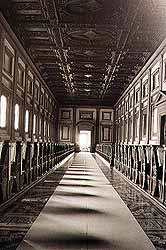
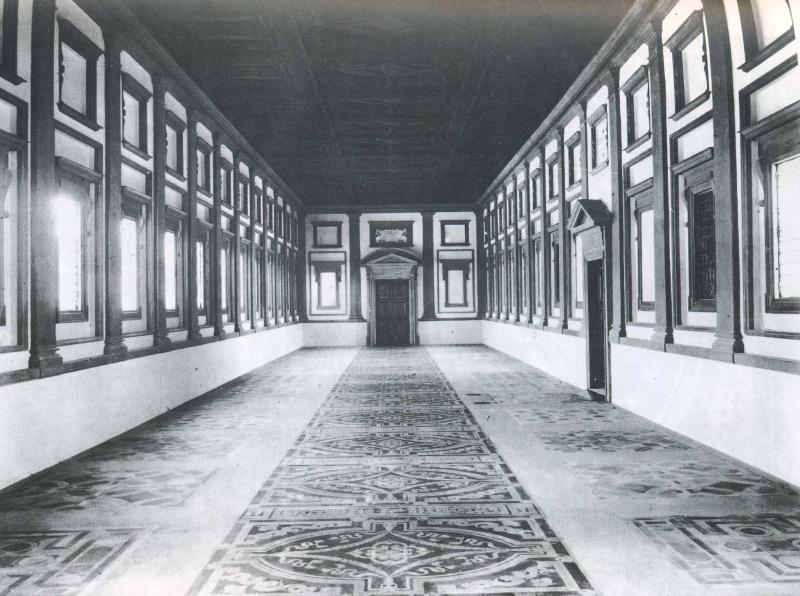
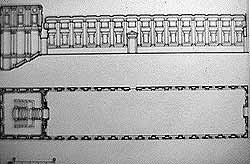
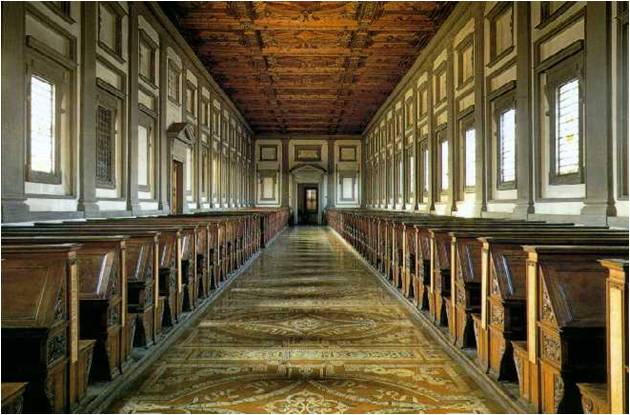
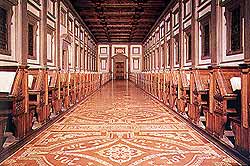
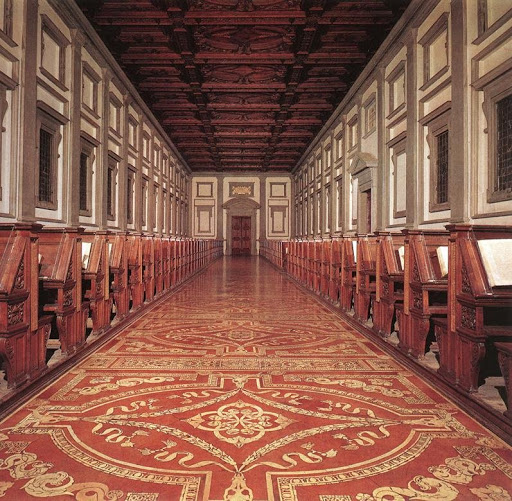
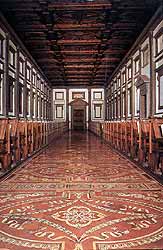
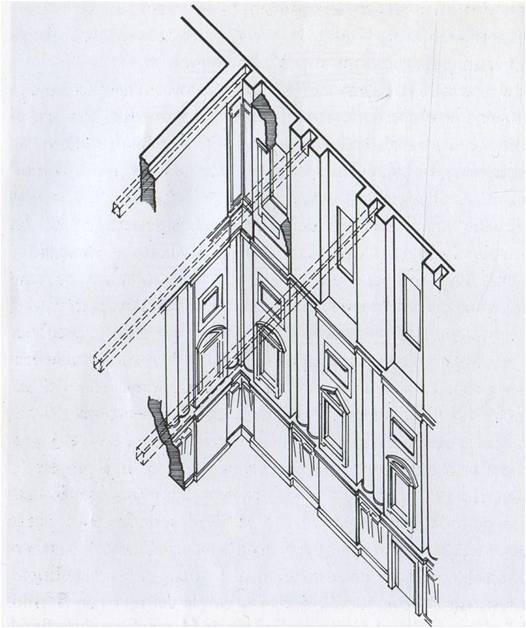
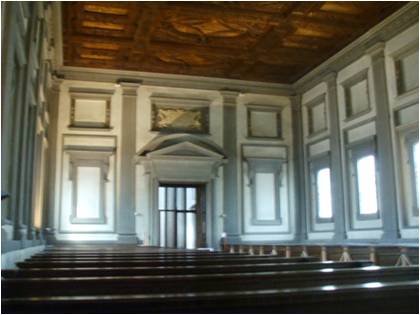
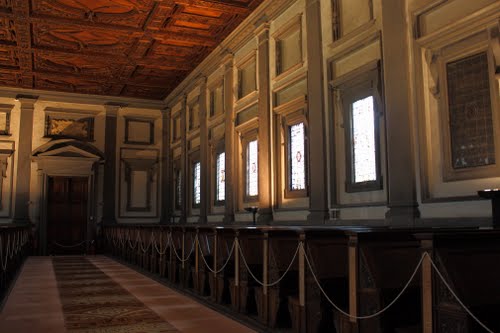
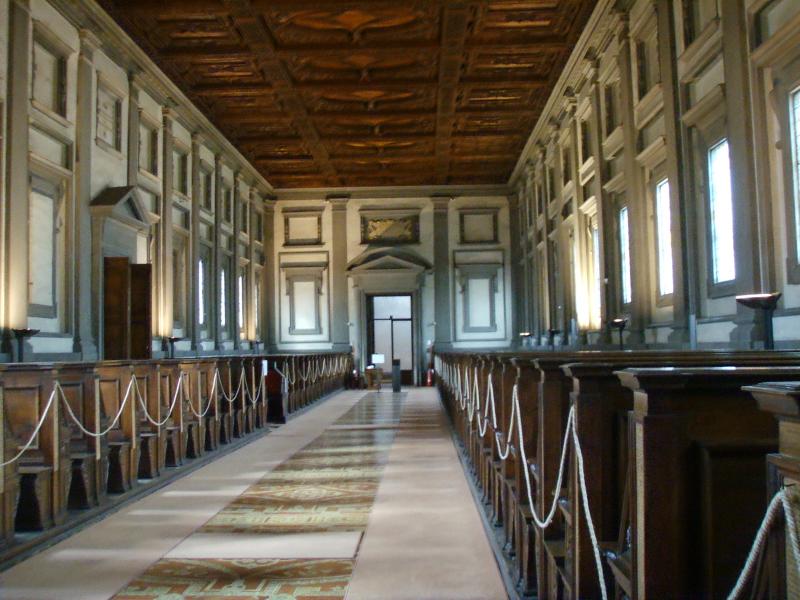
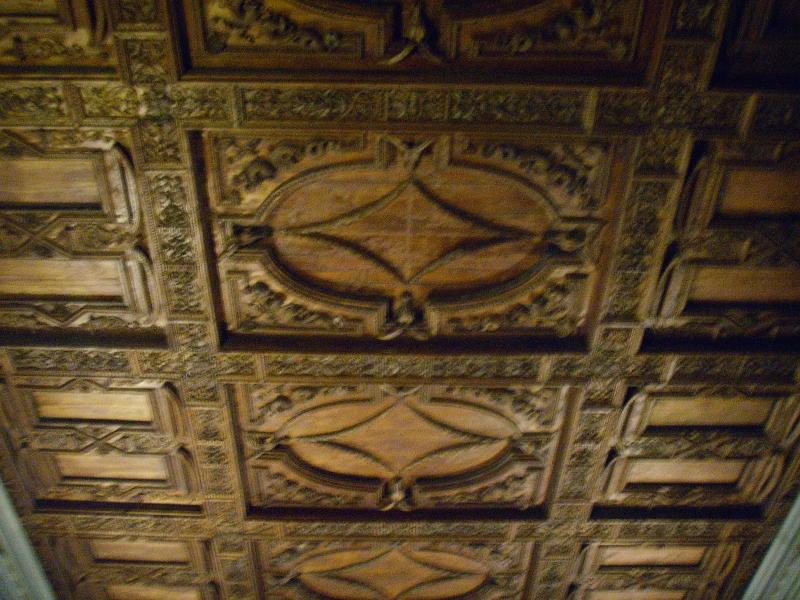
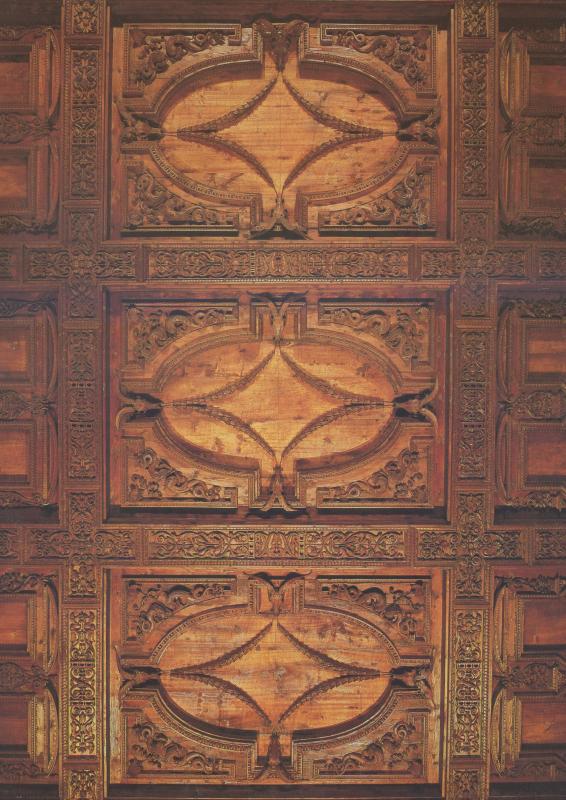
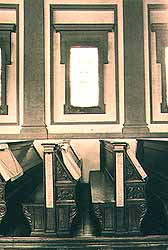
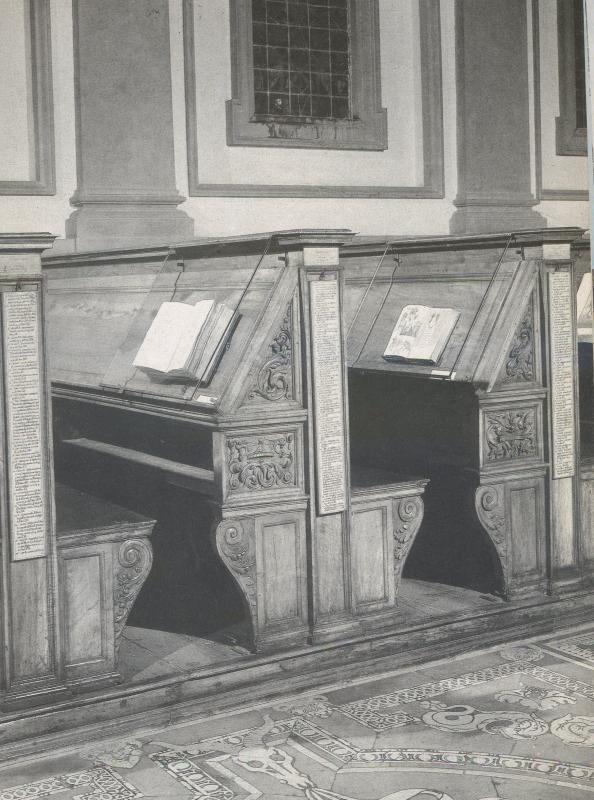
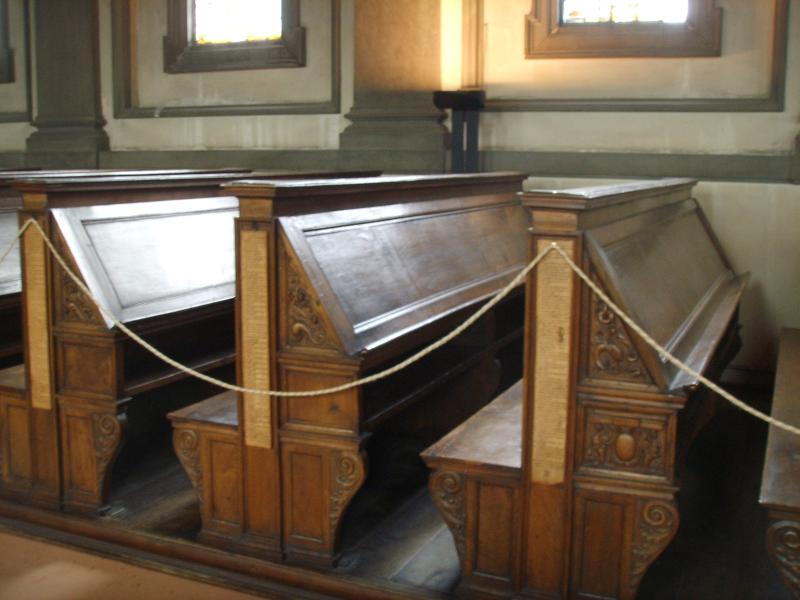
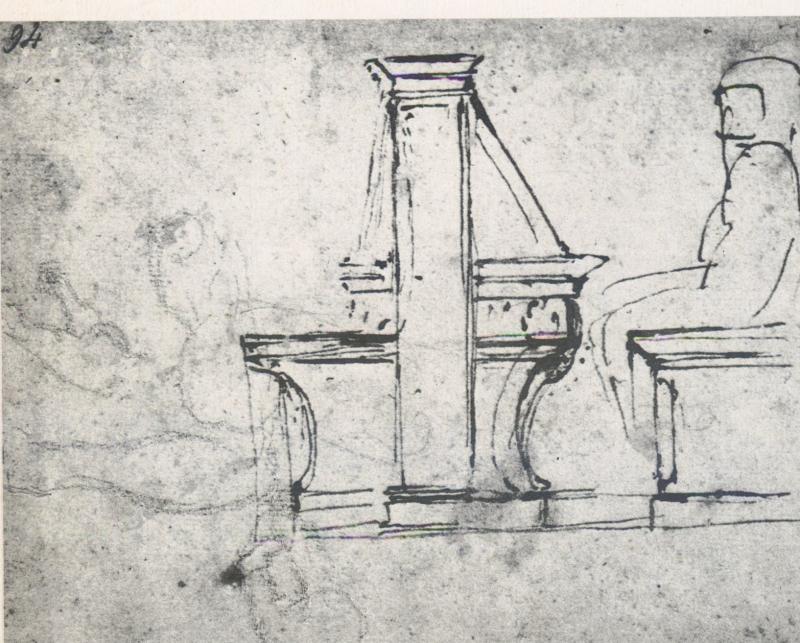

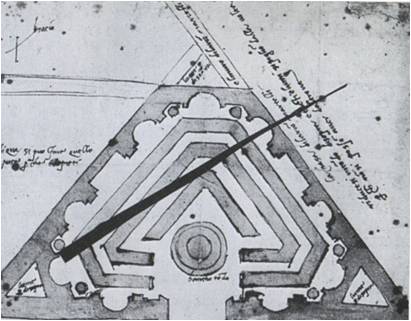
The project carried out by Michelangelo was one of the most significant examples of the transition from the Renaissance to architectural Mannerism, thanks above all to the treatment of the walls of the riccetto or entrance hall to the library. Carried out with classical elements, which as ornament gave an extraordinary monumentality to the space prior to the entrance to the reading room. The paired columns, decorative corbels, triangular and curved pediments... and other architectural elements that are found on the wall without any structural support function, fulfill a decorative function of sculptural architecture. This is completed with the coffered vault on pendentives at the top, and the outstanding monumental access staircase.
The rest of the library's rooms remained unused for a long time because Michelangelo left Florence in 1534, never to return. The walls of the reading room, as well as the roof, were also finished, but the ornamentation of the ceiling, the paved floor, the carving of the tables remained to be executed... with the anteroom not being completed until well into the 19th century, despite the fact that The building was inaugurated in 1571, forty-two years after the original commission.
Mariano j. RUIZ DE AEL

Biblioteca Laurenciana. Iglesia de San Lorenzo. Florencia. Vista desde la sala de lectura al richetto

Biblioteca Laurenciana. Iglesia de San Lorenzo. Florencia.
http://arte.laguia2000.com/arquitectura/biblioteca-laurenciana-miguel-angel

Claurstro de San Lorenzo, Florencia, con las ventanas de la Biblioteca Laurenziana, antes de su restauración.

Biblioteca Laurenciana. Iglesia de San Lorenzo. Florencia.
http://alfavino.blogspot.com.es/2012/12/escalera-laurenciana.html

Biblioteca Laurenciana. Iglesia de San Lorenzo. Florencia.
http://en.wikipedia.org/wiki/Laurentian_Library

Biblioteca Laurenciana. Iglesia de San Lorenzo. Florencia.. Escalera de acceso a la Biblioteca Laurenciana diseñada por Miguel Ángel
http://www.elimparcial.es/cultura/miguel-angel-florencia-complejo-laurenciano-san-lorenzo-arquitectura-3d-102127.html

Detalles del vestíbulo
http://web.educastur.princast.es/proyectos/jimena/pj_leontinaai/arte/webimarte2/WEBIMAG/RENACIMIENTO/bibllaur.htm

Biblioteca Laurenciana. Iglesia de San Lorenzo. Florencia. Vestíbulo de la Biblioteca Laurenciana, escalera y entrada a lasa sala de lectura.

Biblioteca Laurenciana. Iglesia de San Lorenzo. Florencia.
http-//farm4.staticflickr.com/3720/9625399721_6c11462a3c_z

Vestíbulo (ricetto) de la Biblioteca Laurenziana, muro oeste
http//farm4.staticflickr.com/3720/9625399721_6c11462a3c_z.

Biblioteca Laurenciana. Iglesia de San Lorenzo. Florencia.
http-//farm4.staticflickr.com/3822/9628600006_a9bd818667_z

Doble mensula que no sustenta nada mas que a ellas mismas: algo totalmente nuevo hasta la fecha; entrada al manierismo

cúpula de San Lorenzo
http://www.elimparcial.es/cultura/miguel-angel-florencia-complejo-laurenciano-san-lorenzo-arquitectura-3d-102127.html

Biblioteca Laurenciana. Iglesia de San Lorenzo. Florencia.
http://arte.laguia2000.com/arquitectura/biblioteca-laurenciana-miguel-angel

Biblioteca Laurenciana. Iglesia de San Lorenzo. Florencia.. Escalinata de Miguel Anguel
http://www.artehistoria.com/v2/obras/11044.htm

Biblioteca Laurenciana. Iglesia de San Lorenzo. Florencia.
http://www.artehistoria.jcyl.es/v2/obras/11044.htm

Biblioteca Laurenciana. Iglesia de San Lorenzo. Florencia.. Vista superior escalera
http://www.rositour.it/Arte/Michelangelo%20Buonarroti/Michelangelo.htm

Biblioteca Laurenciana. Iglesia de San Lorenzo. Florencia.. La escalera aun asi, no es de Miguel Angel

Alzado y planta de la Biblioteca Laurenciana; el Richetto y la Sala de Lecturas
Arquitectura en Italia 1400-1600 de Ludwig H. Heydenreich Wolfgang Lotz

Perspectiva centras de la sala de lecturas; apreciamos como las paredes siguen un orden claro

http-//arte.laguia2000.com/wp-content/uploads/2013/06/20.-Miguel-Ángel-Biblioteca-Laurenciana-Florencia

Biblioteca Laurenciana. Iglesia de San Lorenzo. Florencia.
http://www.citytripplanner.com/nl/bezienswaardigheden_Firenze/Biblioteca-Medicea-Laurenziana#.U1emLPl_vFk
